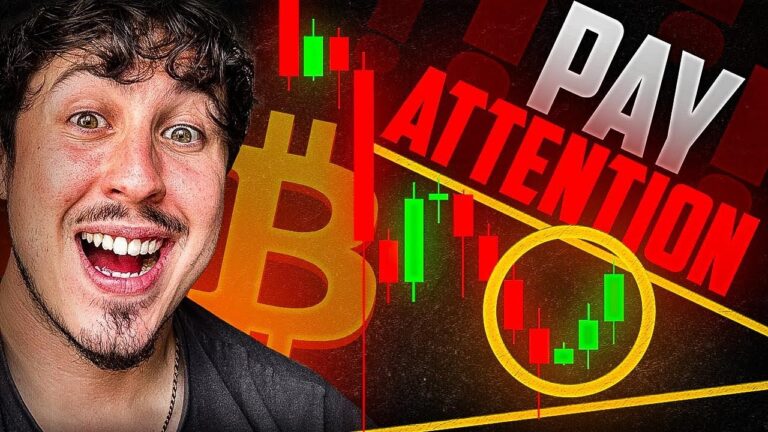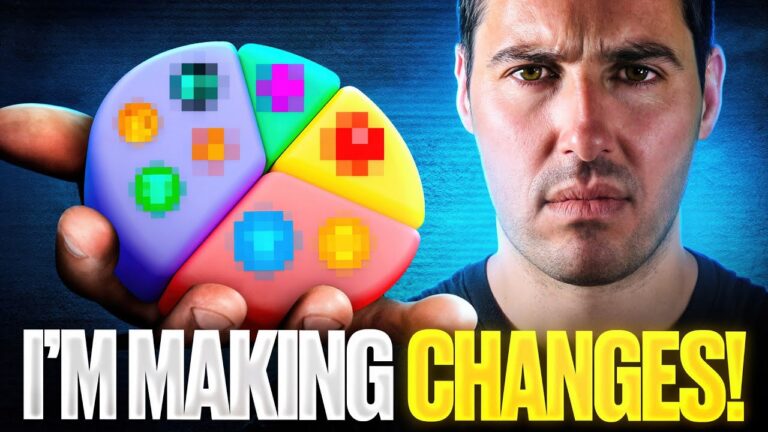In the fast-paced world of cryptocurrency, timing is everything. Day traders thrive on volatility — buying and selling digital assets within the same day to profit from price swings. But success in this field isn’t about luck — it’s about precision, data, and the right tools.
One such tool that has gained traction among traders is TrendWave, a powerful trading indicator designed to identify optimal entry and exit points. In this guide, we’ll explore how to day trade crypto with TrendWave, understand its signals, and learn how to integrate it with other strategies for maximum profitability.
What Is TrendWave?
TrendWave is a popular technical trading indicator often used on platforms like TradingView. It helps traders visualize momentum shifts and potential reversals in the market by identifying overbought and oversold conditions.
Unlike standard oscillators such as the RSI or MACD, TrendWave uses a custom algorithm to highlight momentum waves, allowing traders to spot price exhaustion and trend continuation patterns with greater accuracy.
Key Features of TrendWave
- 🧭 Momentum-Based Indicator – Helps identify trend direction and potential reversals.
- ⚡ Real-Time Buy/Sell Signals – Displays visual alerts for strong entry and exit opportunities.
- 🔍 Customizable Settings – Adjustable sensitivity to fit any market condition or timeframe.
- 📈 Works on All Cryptocurrencies – From Bitcoin and Ethereum to altcoins and tokens.
- 💹 Best for Day Traders and Scalpers – Designed for short-term trading precision.
How TrendWave Works
The TrendWave indicator generates waves on a sub-chart (oscillator window) below your price chart. These waves represent market momentum — the strength and direction of recent price movements.
When the indicator line moves into the overbought zone (typically above 60), it suggests that the asset may be overvalued and a price correction could be near.
When it dips into the oversold zone (below 40), it indicates potential buying opportunities as the market could rebound soon.
Color-Coded Signals
Most TrendWave versions (especially on TradingView) use color-coded signals for easier visualization:
- 🟢 Green Waves: Indicate buying pressure and bullish trends.
- 🔴 Red Waves: Suggest selling pressure and potential bearish movement.
- ⚪ Neutral Waves: Represent consolidation or low volatility periods.
By interpreting these waves correctly, traders can anticipate trend shifts before they happen.
Setting Up TrendWave on TradingView
To start trading with TrendWave, you’ll first need to add it to your TradingView chart.
Step-by-Step Setup
- Open TradingView and log in to your account.
- Select the cryptocurrency pair you want to trade (e.g., BTC/USDT).
- Click on the Indicators tab at the top of the chart.
- Search for “TrendWave” and add it to your chart.
- Adjust the sensitivity and smoothing settings according to your trading style.
- Combine TrendWave with other indicators like EMA (Exponential Moving Average) or Volume Profile for enhanced accuracy.
💡 Pro Tip: For day trading, use shorter timeframes (1m, 5m, 15m) to catch quick price movements.
How to Read TrendWave Signals for Day Trading
Interpreting signals is where the real magic happens. Let’s break down how to read and act on TrendWave’s signals effectively.
1. Buy Signal
When the TrendWave line dips into the oversold zone (below 40) and starts curving upward, it signals potential upward momentum.
- ✅ Confirmation: Combine with a bullish candlestick or EMA crossover.
- 📈 Action: Enter a long position or buy the asset.
2. Sell Signal
When the line rises into the overbought zone (above 60) and begins to slope downward, it indicates potential downward momentum.
- ✅ Confirmation: Look for bearish candle patterns or volume decline.
- 📉 Action: Exit your long trade or open a short position.
3. Neutral/Consolidation Phase
When TrendWave oscillates around the middle zone (between 45–55), the market is likely consolidating.
- ⚠️ Action: Avoid trading — wait for a confirmed breakout or momentum shift.
Best Trading Strategies Using TrendWave
To make the most of TrendWave, it’s wise to pair it with complementary indicators and well-defined strategies. Below are some proven methods used by experienced traders.
1. TrendWave + EMA Crossover Strategy
This combination is excellent for filtering false signals.
- Use a 20 EMA and 50 EMA on your chart.
- Only take buy signals when the 20 EMA is above the 50 EMA (bullish trend).
- Only take sell signals when the 20 EMA is below the 50 EMA (bearish trend).
🧠 Why It Works: TrendWave identifies momentum; EMAs confirm the trend direction.
2. TrendWave + Support and Resistance
When a TrendWave buy signal aligns with a support zone, it often indicates a strong reversal point.
Similarly, a sell signal near resistance can confirm a potential drop.
🎯 Tip: Always check higher timeframes (1H, 4H) for stronger confirmation levels.
3. Scalping with TrendWave
For scalpers, TrendWave provides fast and frequent signals.
- Focus on 1-minute or 5-minute charts.
- Enter trades as soon as a signal appears in line with the short-term trend.
- Use tight stop-losses (0.3–0.5%) and take-profits (0.6–1%).
⚡ Caution: Scalping requires discipline — avoid overtrading based on noise.
Risk Management and Best Practices
Even the best indicator cannot guarantee profits. Successful traders manage risk and maintain discipline.
Golden Rules of Day Trading with TrendWave
- Never risk more than 1–2% of your capital on a single trade.
- Always use a stop-loss to limit downside.
- Confirm every signal with price action or other tools.
- Avoid trading during low liquidity periods (e.g., weekends).
- Keep an updated trading journal to analyze performance.
💬 Remember: TrendWave is a tool — not a crystal ball. Use it wisely as part of a complete strategy.
Common Mistakes When Using TrendWave
Many traders misuse the indicator by relying on it blindly. Avoid these pitfalls:
- ❌ Entering trades without confirmation
- ❌ Ignoring broader market trends
- ❌ Using TrendWave on illiquid tokens
- ❌ Over-trading based on false signals
- ❌ Not adjusting settings for different timeframes
To achieve consistency, treat TrendWave as one component of a broader trading system.
Integrating AI and Automation with TrendWave
Modern traders are combining AI-based bots and automation with indicators like TrendWave.
By connecting TradingView signals to trading bots via platforms like 3Commas, WunderTrading, or Pionex, you can execute trades automatically whenever specific TrendWave conditions are met.
Automation Advantages
- Removes emotional bias
- Executes trades instantly
- Monitors multiple pairs at once
- Ensures consistent application of strategy
🤖 Tip: Start with paper trading before deploying bots with real funds.
Final Thoughts: Mastering Crypto Day Trading with TrendWave
TrendWave has become a favorite among crypto traders for its simplicity, reliability, and visual clarity. When used correctly, it can provide a significant edge in identifying high-probability trade setups.
However, success with TrendWave — or any indicator — depends on:
- Consistent learning
- Proper risk management
- Combining signals with market structure analysis
By mastering the art of trend and momentum trading, you can turn volatility into opportunity and build a disciplined, profitable trading system.
#memecoin #meme #dogecoin #shiba #brett #neiro #memecoins #SOL #solana #PEPE #WIF #BONK #FLOKI #POPCAT #MOG #MEW #BOME
#cryptocurrency #bitcoin #crypto #blockchain #btc #forex #ethereum #money #bitcoinmining #trading #investment #forextrader #cryptotrading #business #entrepreneur #bitcoins #investing #bitcoinnews #cryptocurrencies #binaryoptions #invest #cryptonews #bitcointrading #forextrading #trader #bitcoincash #litecoin #eth #investor #bhfyp #crypto







